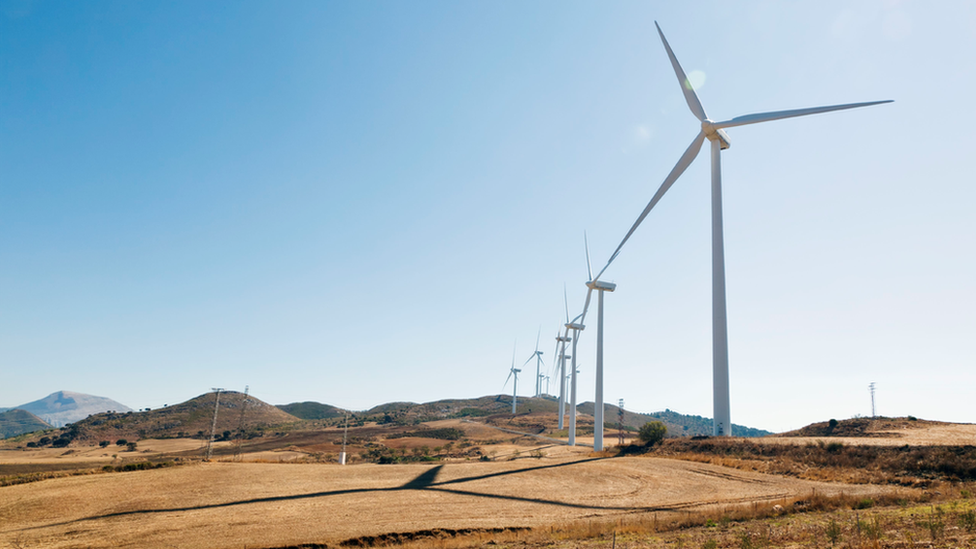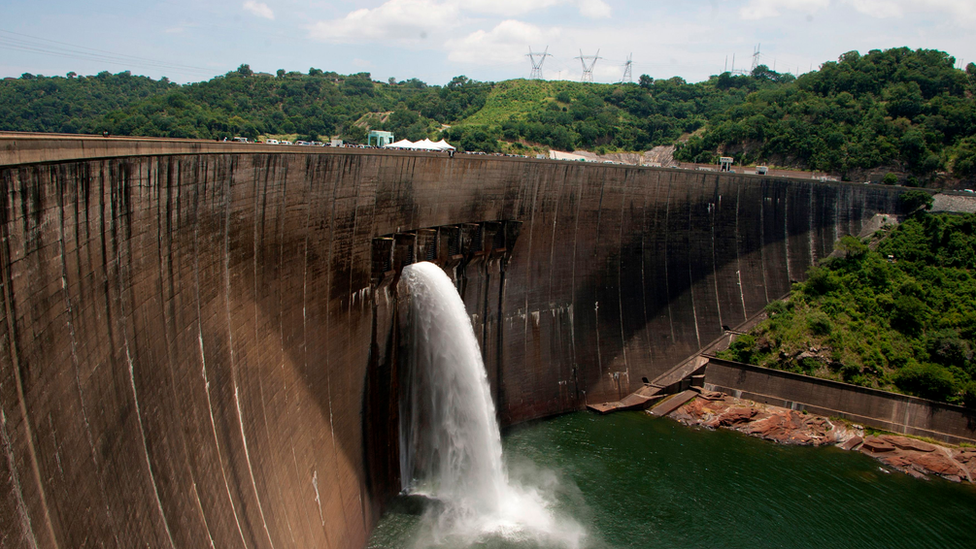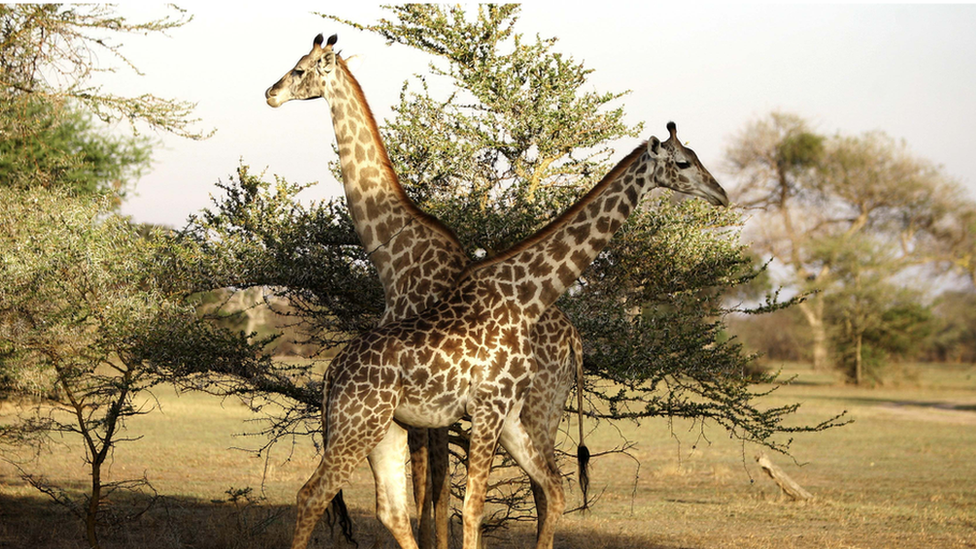Climate change: Green energy plant threat to wilderness areas
- Published
- comments

All over Europe, renewable installations are often located in protected areas
Wind, solar and hydro power installations pose a growing threat to key conservation areas, say researchers.
Researchers found that over 2,200 green energy plants have been built within the boundaries of the Earth's remaining wilderness.
They say that around 17% of renewable facilities globally are located in protected regions.
A further 900 plants are now being developed in key areas of biodiversity.
The amount of renewable energy facilities in use around the world has essentially tripled over the last 20 years.
Green energy facilities are often much larger than fossil fuel power plants, with wind and solar needing areas of land up to 10 times greater than coal or gas to produce the same amount of energy.

Solar installations require lots of land
Now researchers say that often these solar, wind and hydro schemes have been built in areas of environmental significance and pose a threat to key natural habitats.
The team mapped the locations of around 12,500 of these installations. They found that more than 2,200 were built in wilderness, protected regions and key biodiversity areas.
Some 169 were found in strictly managed protected areas where no development activity at all should occur.
"Energy facilities and the infrastructure around them, such as roads and increased human activity, can be incredibly damaging to the natural environment," said lead author Jose Rehbein, from the University of Queensland, Australia.

Hydro facilities in Africa and Asia can significantly alter the landscape
"These developments are not compatible with biodiversity conservation efforts."
The researchers say that energy projects like solar farms often necessitate new roads, and the people who come in to service these installations sometimes build settlements near them.
Western European countries are the worst offenders at the moment, with Germany having 258 facilities in key conservation areas.
Spain has similar numbers of installations, while China has 142.
One big concern from the researchers is the likely expansion of the demand for renewables particularly in Africa and Asia.
The researchers say the number of active renewable energy facilities within important conservation lands could increase by 42% over the next eight years.
In countries like India and Nepal, for example, hydropower is seeing a real boom. Nepal has over 100 facilities within protected areas, while India has 74 under development in important conservation zones.
"In most cases it's just weak planning," said Dr James Allan from the University of Amsterdam, a senior author on the paper.

There are concerns over a hydro project in Selous world heritage site in Tanzania
"So in the Selous world heritage site in Tanzania, the government has just given the go ahead for a massive dam, a huge hydropower project which will really destroy a large area of that national park."
Over the past 18 months, there has been a growing concern about the extinction crisis being seen around the world and much research has been published linking it to climate change.
But while many developing countries are doing their best to tackle rising carbon emissions through switching to renewable energy, the irony is that they are increasing the threat to species when these facilities are installed in protected areas.
The authors of the report say that greater care must be taken when planning and permitting renewable facilities.
"If we let these developments go ahead, the biodiversity will be gone long before climate change starts affecting it," said Dr Allan.
"We acknowledge that there is a risk that we will arm some sceptics, but anyone who reads the work will understand that we are not saying that renewables are bad, we just need to put them in the right places."
The study has been published in the journal, Global Change Biology.